Improving wheat production in the CWANA region

Authors:
Wheat is the principal staple food in most countries of the Central and West Asia and North Africa (CWANA) region, accounting for 45% of the region’s per capita calorie intake with an average wheat consumption of about 200 kg/capita/year, which is the highest in the world. The CWANA region is a vast geographic area extending west to east from the Atlas Mountains in Morocco to the fertile irrigated Indus valley in Pakistan, and from the highland, high-rainfall areas of Ethiopia in the south to the temperate and dry northern Kazakhstan. As expected, this vast geographic area is characterized by large variations in agro-ecology, farming systems, moisture, temperature, soil types and cultural practices. Accordingly, the region harbors all kinds of wild and cultivated wheat types of different growth habits. During the period 1961-2013, wheat production area has increased from 26.9 to 54 million ha, while total production and yield (t/ha) increased from 22 to 122 million tons and from 1.1 to 2.6 t/ha, respectively.
The increase in production is mainly due to the adoption of improved wheat varieties originated from the International Maize and Wheat Improvement Center (CIMMYT) and the International Center for Agricultural Research in the Dry Areas (ICARDA), utilization of inputs, better agronomic practices, increased area of production, and favorable policies. The most important wheat growing countries in the region (Table 1) are in decreasing order: Kazakhstan (13.7 Mha), Pakistan (8.9 Mha), Turkey (7.9 Mha), Iran (6.8 Mha), Morocco (3.0 Mha), Afghanistan (2.4 Mha), Algeria. ere is not sufficient production at regional level to cope with the increasing demand for wheat consumption. Most of the countries in the CWANA region except Kazakhstan, Syria, Pakistan and Turkey are not self-sufficient in wheat production, and accordingly, wheat is their single most important imported commodity. Among North African countries, Egypt is the largest importer with 9 million tons of wheat imported every year. According to Shiferaw et al. (2013), demand for wheat is growing at 5.6 % and 2.2 % /year in Central Asia and North Africa, respectively. In the year 2050, the population in CWANA is expected to increase from the current 0.9 billion to 1.4 billion, and the demand for wheat will rise from the present 164 million tons to 268 million tons, calling for more research and development efforts to increase wheat productivity at the regional and global levels to meet the needs of the increasing population.
CWANA also hosts some of the most damaging and virulent races of diseases and pests. Farmers are typically required to apply fungicide and pesticides multiple times during their cropping season to avoid near complete losses. These chemical products are often at a premium in the small rural markets of CWANA and their availability far from certain. Furthermore, farmers are rarely trained in the deployment of integrated pest management (IPM) practices; the results of IPM malpractices can be the rapid insurgence of novel races with acquired resistance to the pesticides.
The increasing cost of importing grains, combined with the heavy investments in chemical inputs, and the constant risk of the raise of new virulent races clearly show that the current status of wheat production in CWANA is not sustainable in the long term. To cope with such daunting challenge, ICARDA and its partners have identified as the primary goals for sustainability: i) the deployment of novel cultivars which include genetic resistances, yield stability, and increased yield potential; ii) training and deployment of novel agronomical practices to close the productivity gap with reduced inputs per unit of grains; iii) integrated approaches to pest and disease management to prevent the surge of new races and control the ones present.
